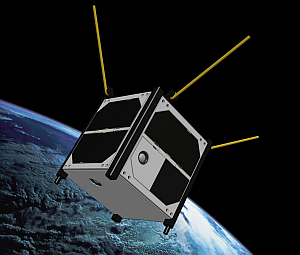Radiation sensors made by Libelium, a developer of wireless sensor hardware in Zaragoza, Spain are part of the payload contained in CubeSat satellites launched this past weekend on a cargo mission by the Japan Aerospace Exploration Agency. The sensors are part of the first two ArduSat satellites made by open-platform satellite maker NanoSatisfi in San Francisco.
ArduSats are designed on the CubeSat model, with cubes measuring 10 centimeters and weighing about a kilogram that offer a standard platform for small-scale payloads. One of the ArduSats launched Saturday contains two of Libelium’s radiation sensor boards that monitor radiation from phenomena such as sun storms, as well as background radiation levels. The company says its technology is part of the Geiger counter measuring gamma particles produced in space.
ArduSat cubes include contain some 25 sensors, three cameras, and instruments including spectrometer, and magnetometer, as well as the a Geiger counter. The system’s processors are built on the Arduino open-source electronics prototyping platform, thus the ArduSat name. Customers write their own applications software to run on the platform and gather data from space.
The ArduSats were launched Saturday afternoon (Eastern time in the U.S.) on board a Japan Aerospace Exploration Agency’s HTV-4 cargo transporter from the Tanegashima Space Center in southern Japan, en route to the International Space Station. The ArduSats will be deployed from the Kibo research lab aboard the space station maintained by Japan’s space agency.
Once deployed, students from the U.S., Brazil, Guatemala, India, Indonesia and Israel will access and control the satellites for science experiments, beginning this fall. Among the experiments are detection of high-energy radiation levels using the Libelium sensors. Other experiments include testing for orbital mechanics and dynamics, building a 3-D model of the Earth’s magnetic field, measuring temperature changes in space, and taking a photo from space.
Read more:
- Google: No Open-Source Patent Suits, Microsoft Lists Patents
- Robotics Cloud Software Platform Being Demonstrated
- Space Data Start-Up Raises $1.3M from Angels, Crowdfunding
- Consortium Launched for Industrial Robotic Operating System
- Companies Join Stanford/Berkeley Open Networking Consortium
* * *


 RSS - Posts
RSS - Posts
You must be logged in to post a comment.